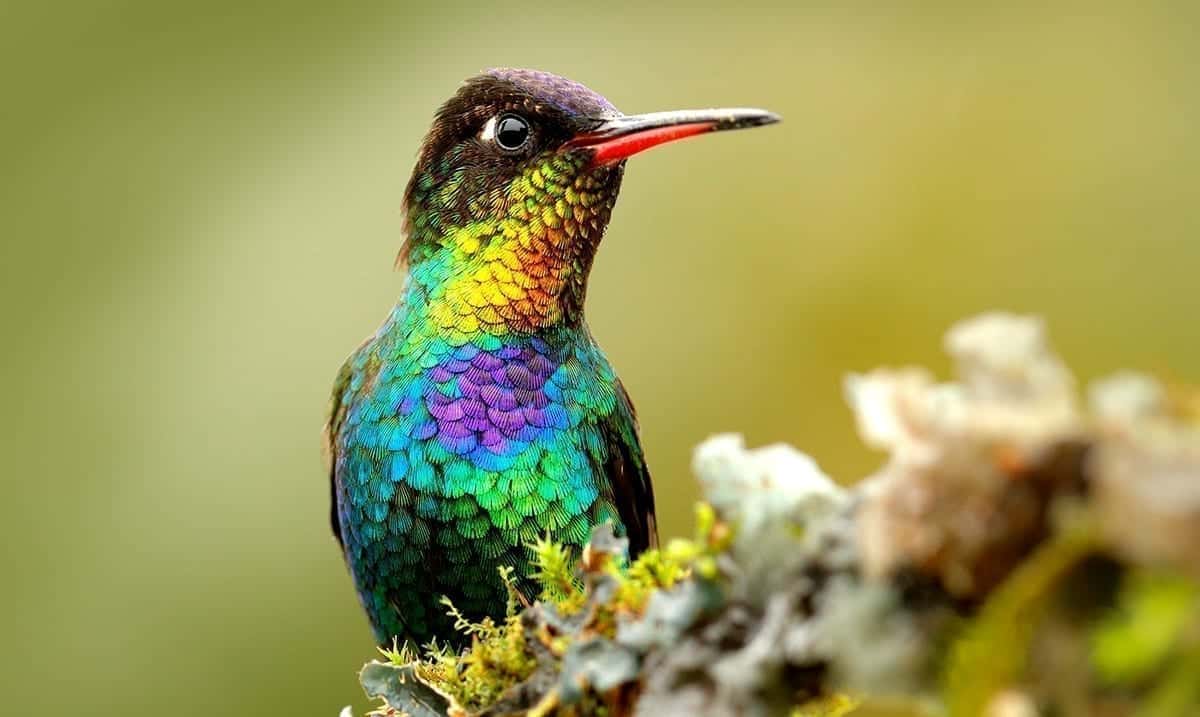In recent times it seems something interesting has come forth about those cute little hummingbirds you see from time to time. As humans, we see a lot of colors but apparently, hummingbirds can see colors we as humans couldn’t imagine.
According to National Geographic Mary Stoddard birds, the hummingbird in specific (the wild broad-tailed hummingbird) can see a lot more than most thought initially. A paper on these findings was published in recent times within the journal PNAS and basically, it’s noted that hummingbirds are able to discriminate non spectral colors. This paper was published on June 15th and is still very new which makes it all the more interesting.
This study’s abstract goes as follows:
Many animals have the potential to discriminate nonspectral colors. For humans, purple is the clearest example of a nonspectral color. It is perceived when two color cone types in the retina (blue and red) with nonadjacent spectral sensitivity curves are predominantly stimulated. Purple is considered nonspectral because no monochromatic light (such as from a rainbow) can evoke this simultaneous stimulation. Except in primates and bees, few behavioral experiments have directly examined nonspectral color discrimination, and little is known about nonspectral color perception in animals with more than three types of color photoreceptors. Birds have four color cone types (compared to three in humans) and might perceive additional nonspectral colors such as UV+red and UV+green. Can birds discriminate nonspectral colors, and are these colors behaviorally and ecologically relevant? Here, using comprehensive behavioral experiments, we show that wild hummingbirds can discriminate a variety of nonspectral colors. We also show that hummingbirds, relative to humans, likely perceive a greater proportion of natural colors as nonspectral. Our analysis of plumage and plant spectra reveals many colors that would be perceived as nonspectral by birds but not by humans: Birds’ extra cone type allows them not just to see UV light but also to discriminate additional nonspectral colors. Our results support the idea that birds can distinguish colors throughout tetrachromatic color space and indicate that nonspectral color perception is vital for signaling and foraging. Since tetrachromacy appears to have evolved early invertebrates, this capacity for rich nonspectral color perception is likely widespread.
This study is important because it gives us a new look at how birds really see things. When it comes to birds and how they see, we really just don’t know much. While it might not sound like a lot, in the future research like this could help us to really gain a better understanding.
National Geographic reported as follows on the topic:
For the study, Stoddard and her team set up several tube bird feeders outfitted with LED devices near the laboratory. They programmed LED devices near the feeders to turn a surface two different colors, depending upon whether the feeder held either a small amount of sugary water or plain water.
“It’s important to do the tests in the wild,” says Stoddard, “so that we can really understand these birds’ sensory experience of the world.”
The hummingbirds, which eat flower nectar, quickly learned to associate one color with a rewarding sweet sip, and the other color with unrewarding plain water.
Over three field seasons from 2016 to 2018, the scientists conducted 19 experiments and tallied some 6,000 hummingbird visits. By tracking the birds’ visits to the feeders, the scientists showed that broad-tailed hummingbirds consistently chose the feeder with the sweet taste, regardless of whether they had a nonspectral or spectral hue.
“Even when the colors looked the same to us—for example, when the birds had to choose from a feeder colored UV-green and one that was simply green—they could see the difference,” says Stoddard.
Birds are truly amazing and this only proves that further. What do you think about all of this? I for one cannot wait to learn more.

